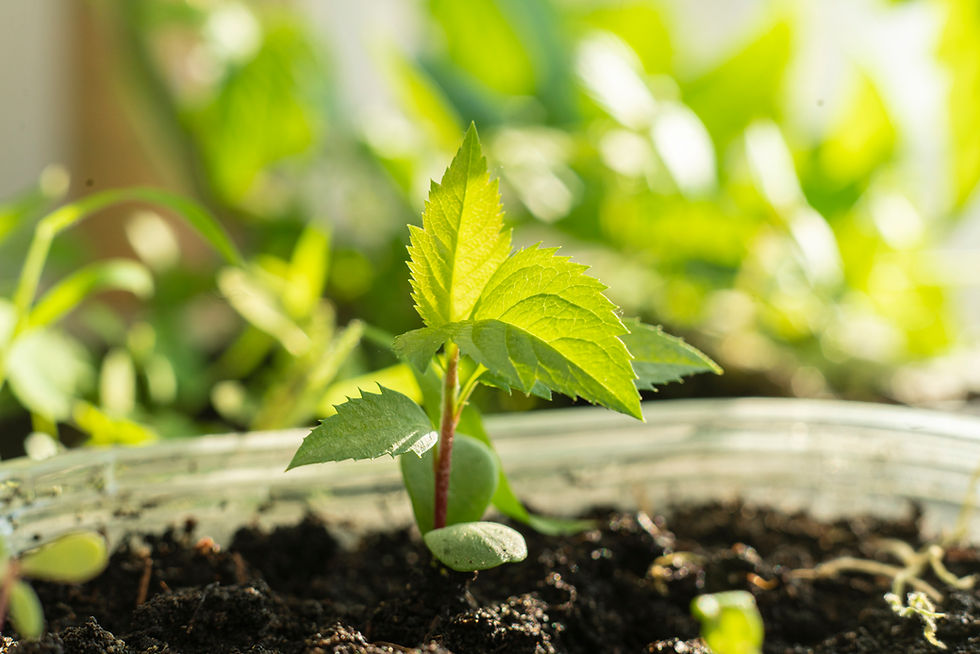P. putida and Mycorrhizal Symbiotic Benefits
- Stanislav M.

- Sep 26
- 3 min read

The combination of Pseudomonas putida and mycorrhizal fungi creates a powerful synergistic partnership that significantly enhances plant growth, nutrient uptake, and stress resilience. This tripartite symbiosis represents one of the most effective biological approaches to sustainable agriculture and plant health management.
Enhanced Plant Growth and Development
The dual inoculation of P. putida with mycorrhizal fungi delivers remarkable growth improvements that surpass the benefits of either microorganism alone. Research demonstrates that co-inoculation can increase plant biomass by 57-255% compared to uninoculated controls. In tomato plants, dual inoculation with Funneliformis mosseae and P. putida resulted in biomass increases of 255.49% under pest stress conditions, significantly outperforming single inoculations.
Root system enhancement occurs through complementary mechanisms. P. putida produces indole-3-acetic acid (IAA) and other phytohormones that stimulate lateral root development and root hair formation. Simultaneously, mycorrhizal fungi establish extensive hyphal networks that effectively expand the root surface area for nutrient absorption. This combination creates robust root systems with enhanced capacity for resource acquisition.
Synergistic Colonization Enhancement
A key benefit of this partnership is the mutual enhancement of colonization. Mycorrhizal fungi can attract P. putida through specific signaling molecules. Research has shown that Funneliformis mosseae secretes cysteine as a chemoattractant that specifically recruits P. putida KT2440 to the soybean rhizosphere. This targeted recruitment ensures optimal bacterial positioning for maximum plant benefit.
The mycorrhizosphere effect plays a crucial role in this process. Mycorrhizal colonization alters root exudate composition, particularly increasing benzoxazinoid compounds that serve as positive chemotaxis signals for P. putida. Studies demonstrate that wheat cultivars with higher mycorrhizal compatibility support significantly greater P. putida colonization levels, which are further augmented by mycorrhizal infection.
Enhanced Nutrient Acquisition
The partnership excels in phosphorus mobilization through complementary mechanisms. P. putida produces organic acids (gluconic, citric, oxalic acids) that solubilize inorganic phosphate compounds in soil. Research shows that encapsulated P. putida strains can achieve phosphate solubilization rates of 171-189 μg/mL. Concurrently, mycorrhizal hyphae access phosphorus from soil volumes beyond root reach and transport it directly to plant tissues through arbuscular structures.
Nitrogen dynamics also benefit from this cooperation. While P. putida doesn't directly fix nitrogen, it supports nitrogen-fixing bacteria activity and enhances nitrogen metabolism. Mycorrhizal fungi can provide up to 42% of plant nitrogen requirements through their hyphal networks, particularly efficient at accessing NH4+ forms.
Iron acquisition improves through P. putida's production of pyoverdine siderophores, which chelate iron and make it available to both the plant and fungal partner. This iron sequestration also serves as a biocontrol mechanism by depriving potential pathogens of this essential nutrient.
Stress Tolerance and Disease Resistance
The combination provides superior abiotic stress tolerance. P. putida's ACC deaminase activity reduces plant ethylene levels during stress conditions, while mycorrhizal fungi improve water and nutrient uptake efficiency. Under salinity stress, dual inoculation shows higher infection percentages and better plant performance compared to single inoculations.
Disease resistance emerges through multiple pathways. P. putida produces antimicrobial compounds, siderophores, and biofilms that suppress soil-borne pathogens. Mycorrhizal fungi contribute to induced systemic resistance (ISR) by priming plant defense mechanisms. The combination results in significant increases in jasmonic acid concentrations (42-90% increases) and enhanced phenylalanine ammonia-lyase activity (47-60% increases), key markers of plant defense responses.
Optimized Resource Allocation
The partnership demonstrates efficient division of labor in the rhizosphere ecosystem. Studies reveal that colonized P. putida stimulates L-tryptophan secretion by host plants, leading to upregulation of genes involved in converting methyl-indole-3-acetic acid (Me-IAA) into active IAA. This creates a feedback loop where the plant actively supports beneficial microorganisms that, in turn, enhance plant growth.
The metabolic cooperation extends to carbon flow dynamics. Plants provide carbon sources to both partners through root exudates and direct transfer to mycorrhizal fungi. In return, the microorganisms deliver enhanced nutrient acquisition, growth hormone production, and protective services that far exceed the carbon investment.
Agricultural Applications and Effectiveness
Field applications demonstrate the practical value of this partnership. Tomato production studies show that P. putida alone can increase yields by 5 t/ha, while specific strain combinations optimize performance. In onion cultivation, dual microbial inoculation provides maximum benefits for growth and bulbing through integrated mechanisms.
Sustainable agriculture benefits include reduced dependence on chemical fertilizers and pesticides. The enhanced nutrient uptake efficiency means farmers can reduce phosphorus fertilizer applications while maintaining or improving crop yields. The natural biocontrol properties reduce the need for synthetic pesticides, supporting environmentally friendly farming practices.
The compatibility and strain selection proves crucial for optimal results. Research indicates that not all combinations are equally effective - some mycorrhizal fungi may inhibit certain bacterial strains. However, when compatible partners are selected, such as specific P. putida strains with Funneliformis mosseae, the synergistic effects are consistently pronounced across diverse plant species.
This P. putida-mycorrhizal partnership represents a sophisticated biological system that exemplifies how understanding microbial interactions can lead to practical solutions for sustainable agriculture and enhanced plant productivity.


Comments